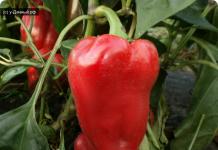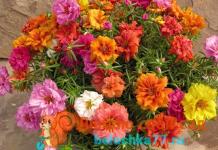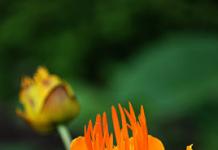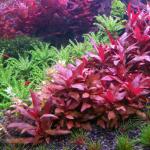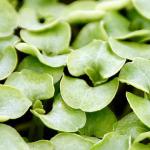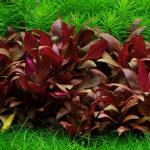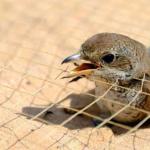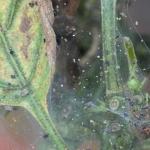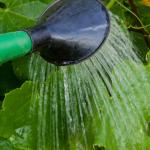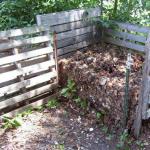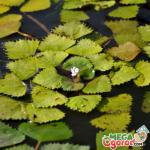Alternantera is an incredibly beautiful plant that can attract the attention of the most sophisticated person. Being under water, it creates the effect of a bright blazing flame, which instantly captivates with its impressive appearance.
Alternantera is able to decorate any underwater landscape. It is usually used as the main eye-catching element of an aquarium installation. There are species used in decorating not only aquariums, but also reservoirs, these include such species as: Alternanthera sessilis, Alternanthera reineckii.
Initially, Alternantera varieties appeared in Europe towards the end of the 1970s, they were brought to us by immigrants from South America, after which they immediately began to gain great popularity and gained wide popularity among aquarists of all degrees, from amateurs to professionals.
The genus Alternanter has up to 200 species of these. They are of great variety. Among them there are annual and perennial species, plants in the form of bushes and trees. But all of them are united by the obligatory presence of oncoming or opposite leaves. In nature, they are found mainly among tropical and subtropical climatic zones of all continents.
Alternantera aquarium plant
The inflorescences of the Alternantera are usually not particularly remarkable. But this is not required, because all the charm, charm and beauty of these plants lies in their magnificent, conspicuous, charming foliage. She won the hearts of people so much that some are still widely used and cultivated by flower growers. They are good at cutting, so different varieties of Alternanter are successfully used to decorate parks or gardens, they decorate a variety of flower beds and flower beds.
For example, species such as Alternanthera amoena (Lem) Voss and Alternanthera bettzickiana boast pronounced scarlet spots, diluted with bright veins, creating a spectacular contrast with other plants of their usual green color. Many species are bred specifically for aquariums, as they grow well, breeding efficiently in water.
The most common and popular of these species among aquarists are: Alternanthera Reineckii (Alternanthera reineckii) and Alternanthera sessile (Alternanthera sesilis).
Alternanthera reineckii (Alternanthera reineckii) maintenance and care rules

This species of Alternantera is native to tropical countries such as Paraguay and Brazil. There it is known mainly as a marsh plant, which is able to grow safely and long under surface conditions, but it is also highly adaptable to underwater life. This species has long established itself among flower growers as a welcome decoration for any decorative aquarium. In its natural environment, it grows in areas that have been in a flooded state for a long time.
Informative video about the contents of the alternantera:
It has creeping stems, which, when growing, creates the effect of a covered meadow. The leaves open in cross-shaped patterns, perpendicular to each other, creating a voluminous pomp of the foliage, despite the relatively small size of the leaves themselves (about 3 centimeters long and 1 wide). They are colored a red-green, sometimes with a pink tinge.
The tops of the stems go out and rise above the surface of the water - this is an adaptive mechanism of Alternantera, allowing it to persist when environmental conditions change. You can verify this with your own hands, let's lower the protruding processes under the water again. The leaves will fall off.

When making aquarium decorations, Reinecke's Alternantera should not be planted too densely, as it is rather fragile. In small aquariums, the stems quickly reach the surface of the water, starting to open leaves in the air. In this case, the strength of the leaves remaining under water is lost, which the plant can get rid of by discarding them. Therefore, then make sure to pinch the shoots protruding above the water in time, since in one month they can grow up to 15 centimeters. Timely pinching will also help increase the branching of the stems, which will give even more to your plant.
Favorable conditions for growing such an Alternantera in an aquarium will be water with a hardness of up to 12 ° and a temperature in the range of 24-28 degrees Celsius, but, having slowed down its growth, it will be able to survive in colder water, up to 20 degrees. The pH values should not deviate from the values of 6.2-6.8. An important condition is good water filtration - it is necessary to update up to 25% of its volume contained in the aquarium per week.

Alternantera Reinecka mini
Alternantera Reinecka is extremely photophilous, so it will be a good idea to provide bright aquarium lighting. The development and color of the leaves of the plant fundamentally depends on this. Fluorescent lamps that create artificial light with a power of up to 0.5 W / l are well suited. Along with artificial, exposure to direct sunlight will be useful. The length of the day should be approximately 12 hours, no less.
The composition of the soil, on the contrary, is not of particular importance. Alternantera Reinecka gets all the essential nutrients it needs directly from the water. Sand is perfect as a substrate, since such an environment is extremely beneficial for the development of the plant's root system. It will not be superfluous to feed with mineral mixtures. A couple of times a month, you will need to add ferrous salts in a ratio of 0.2 mg per liter of water.
Reproduction of Alternantera Reineck occurs vegetatively. Cuttings are separated from sufficiently large, rooted stems, after which they are placed on the surface of the water. After some time, they sprout roots, and then they are planted back into the ground again.
Alternantera Reineck is also suitable for greenhouse conditions. To do this, she needs to provide bright, long-term lighting and moist soil rich in nutrients to compensate for the lack of water in the environment of the plant. The most optimal air temperature for such conditions is 26-30 degrees Celsius. With proper care Alternanter Reineck grows in the greenhouse in lush bushes with bright purple leaves.
Sedentary Alternantera (Alternanthera sesilis) maintenance and care

Alternanthera sesilis Alternanthera sesilis
This species of Alternanter is characterized by maintaining adaptability to underwater conditions after the death of the lower leaves. After that, in such an Alternantera, new bushes are formed that have a decorative effect. The color of the plant depends on the degree of illumination. So, with sufficient light, the lower part of the leaf is painted bright red or pink, the upper one usually has a green color.
- In shady conditions and subdued light, their colors shift to purple and brown hues, which does not detract from the decorative effect of the seated Alternantera, despite the less intense coloring.
- In order for the plant to successfully take root in a new aquarium, more or less mature, mature individuals with strong stems and at least four pairs of leaves must be planted in the ground.
- This species of Alternantera breeds very quickly under water, growing in powerful bushy clusters.
In small aquariums, the walls of the tank are usually decorated with a sessile Alternantera, completing up to 15 plants together. In large aquariums, it is planted with free places in the middle, which allows the formation of bushy islands up to 30 square centimeters in area.
The sessile Alternantera species includes two subspecies:

The first is Alternanthera sessilis var. lilacina. This plant can be found all over the world, it lives mainly in places with a warm climate. It has excellent adaptability to various habitat conditions, both surface and underwater. Foliage color varies under different growing conditions. Most often there are plants with a green-lilac coloring. But in some individuals, the leaves glow bright red on all sides.
Cultivation of such an Alternantera in aquarium conditions will not be difficult. Young sprouts, when planted, take root easily and rarely die. The plant is unpretentious to the composition of water and light intensity, well tolerated by any conditions. The only root factor in the cultivation of Alternanthera sessilis var. lilacina will ensure the stability of the aquarium environment. Ideal conditions will be clean water without algae and a pH value of about "7".

Sessile alternathera flower Alternanthera sessilis var. rubra
The second subspecies is Alternanthera sessilis var. rubra. This Alternantera is predominantly surface. It grows at a high speed, in a week it can increase immediately by 20 centimeters and release a lot of leaves. When cultivated under water, the plant branches and only a small part of the stems makes its way to the surface, where it begins to branch again. In total, they can grow up to 60 centimeters in size.
The leaves, as well as the stem, have a bright ruby color on all sides. Peduncles are sessile and also colored with reddish hues. They usually appear in the middle of pairs of leaves. However, for flowering to occur, the plant needs to provide a long daylight hours - up to 12 hours or more. This is due to the homeland of this Alternantera.
Under natural conditions, it grows in the tropics with a day length of 12 hours a day. The most optimal place in an aquarium or pond for her will be the center, in the middle of larger green plants. Under water, it is capable of rapid rooting, but then it is forced to slow down its own, maintaining a decorative appearance for up to 6 months.
- As soon as the leaves begin to fall off the plant, this is a sign that it is time to start replacing it with new seedlings.
- For these purposes, it is recommended to grow them in advance using a separate small greenhouse with very high humidity and non-directional light.
- In an aquarium where it is planned to plant pre-grown individuals, the water should be slightly acidic.
Alternantera is a plant of amazing beauty that can miraculously decorate any decorative aquarium or pond. And their adaptability and variety of species gives you the opportunity to cultivate Alternantera in a wide variety of conditions, decorating home aquariums and open water, creating displays both with underwater forms and with species that have taken root in coastal soil.
Alternentera lilac Alternanthera lilacina

Under natural conditions, plants are found in reservoirs with low-current waters, mainly in South America. She only needs clean water and no direct light. Tolerates full immersion, but still prefers to rise slightly above the water.
Beautiful flowering can be observed only above the surface; in the aquarium, the sprouts reach no more than half a meter in height. A bright shade acquires only with a sufficient content of carbon dioxide in the water. To do this, make special periodic top dressing. The plant has another name: the anther is large and is very in demand in aquarium design.
Human fascination with the animal and plant world of the distant tropics has created an interesting science of aquarism. Many enthusiastic people want to build their own bright, mysterious world, in which rare vertebrates and invertebrates swim merrily next to amazing underwater plants. Having studied the necessary information, having made the right choice of the inhabitants of the aquarium, the most interesting process of decorating a modern glass house begins.
Among the many types of aquarium plants, you will definitely want the reineca alternantera, like a blazing fire, to draw attention to a cozy corner of the house.
Description
Botanists have attributed such a plant as Alternantera to the Amaranthaceae family. All the warm countries of the globe are home to a plant that develops on land, under a layer of water. Gardeners use beautiful bushes with purple, red leaves to decorate flower beds. Underwater forms of bright plants that came from the swamps of the Amazon have found a place for a worthy decoration of artificial reservoirs, greenhouses organized in people's homes. At the same time, they serve as a natural biofilter necessary for the optimal development of, for example, aquarium fish.
Following the advice of experts, bushes are planted on the sides, near the center of the aquarium, depending on the type of alternantera. The stems are located under water, grow quickly. Formed in the form of a vertical bush or a long trunk. Having reached the surface of the water in the aquarium, the plant begins to feed on air from the atmosphere. Development conditions are changing.
It is important to know! In the open space, aerial leaves begin to grow, greatly inhibiting the growth of underwater leaves, which quickly fall off. The decorativeness of the alternantera is deteriorating. To prevent an undesirable phenomenon, pinch the crown of the stem.
A simple agricultural technique allows you to accelerate branching, the formation of beautiful bushes.
With quality care, Reinek Alternantera has bright leaves about 4 cm long. Their width is 2 cm. The shape of the leaves is lanceolate. Opposite, green above with hints of brown. The underside of the leaf of Alternanthera reineckii can be a delicate pink, bright red, magical purple. The saturation of the color of the leaves depends on the environment, growing conditions, especially on the amount of lighting. The plant blooms in summer. Near the leaf axils, small yellow, white, pink flowers are visible. By planting different types, you can quickly create amazing contrasting compositions. They decorate the back wall of the aquarium, create beautiful thickets necessary for a variety of inhabitants of aquariums.
Types, basic rules of care
Botanists have discovered about 200 species that differ in the color shades of the leaves, the shape of the bush, and the conditions for optimal growth. Among them, most often used for aquarium compositions, the following types are recommended.
Reinecke Alternantera content
For the first time in our country, the Reineck Alternantera appeared under the names Telantera osiris”, “T. lilacina”, “T. Rubra as aquatic plants. The growth rate, reaching up to 15 cm per month, made it possible to quickly realize the planned variants of the compositions. For success, you must strictly comply with certain agrotechnical requirements. First of all, keep the water temperature around 26, hardness up to 12, pH value around 7. When the water temperature drops to 20, the growth of the stems slows down. Constant lighting with lamps, active filtration, weekly replacement of a quarter of the water are required. Useful natural sunlight. The total daylight hours should be about 12 hours.

It is important to remember that if there is too much light, Alternanther Reineca can die from the rapid growth of green algae. A sharp change in temperature leads to the death of leaves, stems.
Alternantera reineca is classified as a type of plant that does not require a special soil composition that affects optimal growth. It receives the necessary nutrition from water enriched with mineral fertilizers. Usually, about 0.3 g per liter of water, ferrous sulfate, nitrogenous fertilizers are applied twice a month.
Coarse sand is considered the best soil. Roots develop well among it. Propagated vegetatively. Use cuttings, cut from large stems, with four pairs of leaves. They are left to float on the water surface. Roots appear quickly. The finished seedling is carefully fixed with soil covering the bottom of the aquarium. Alternantera has brittle stems requiring extra care during care. This type is the least demanding on the growing conditions created, but does not have the most intense leaf color. The bright red color is inherent in the Alternanthera cardinal variety (Alternanthera reineckii cardinalis), which looks spectacular next to the green leaves of other species. A dwarf form of a plant that forms lush brown bushes is considered a mini alternanthera (Alternanthera reineckii "Mini"). The height of the plant is not more than 20 cm. The variety has been used since 2007 for planting in the foreground of the aquarium. Differs in the formation of a large number of side shoots coming from the mother plant. Growing conditions are normal, as for other species. With a lack of lighting, the leaves turn green.
Alternantera lilac
An unusual plant with rich red, ruby foliage stands out from other Alternanter species. Both sides of the leaves have bright hues. Looks impressive in a group planting in the center of the aquarium. Alternantera lilac is an infrequent visitor to home aquariums due to its very slow growth rate. In addition, it grows well in fertile soil.

Alternantera sessile
It is distinguished by the presence of a long stem when grown in a deep aquarium. A dense, branching stem when planted on the ground, like natural conditions along the banks of marshy swamps. It is often recommended to plant in separate containers. They are fixed at the bottom of the aquarium. Alternantera sessile requires regular, weekly haircuts. Thanks to this technique, beautiful, strong bushes are formed, practically not damaged by diseases and pests. The Alternantera plant is propagated by dividing the bush, cuttings.
For this type, it is important to know that the top of the sessile alternanther plant, which has appeared above the water, is cut off, planted in the ground, deepened by two leaves. Chopped cuttings are also immediately planted without keeping on the surface of the water until roots form.
Alternantera sessile is grown in conditions of good lighting, regular fertilizing with mineral fertilizers.
Of the long-stemmed species, Alternantera lilacina is often grown. Throughout the year, beautiful stems of the plant develop evenly, decorated with leaves, the upper side of which has an olive hue. The underside can be red to purple in color.
Alternantera splendida
Botanists consider it one of the most beautiful species. The leaves are pink, red, purple on both sides, reminiscent of Alternantera cardinalis. An overdose of potassium when fertilizing leads to a distortion of the shape of the leaves. The plant has large roots, takes root slowly. Hard to tolerate transplant. In the role of soil, sand with a grain of up to 5 mm is recommended.
Alternantera Betzika

Alternantera Betzika (A.bettzikiana) has leaves shaped like a spatula with a sharp edge. Their olive surface is decorated with yellowish, white, red spots. Flower buds are located at the ends of the stems. The most famous varieties are golden, yuvel, kuntzi, burr, alternantera betzikiana green.
Alternantera pink
The long leaves of the plant stretch upward, showing their always pink underside. The stem is thick, has many stem nodes, from which elliptical leaves grow in pairs. The roots are thin, weak. The bush receives nutrition through small processes located near the base of the leaves. Delicate white flowers appear among the leaf pockets in summer. Next to the red alternantera bush, an elegant, festive look is created.

Creating underwater compositions has long been a fascinating pastime for many people. Reineck Alternantera helps to realize the most fantastic ideas of the tropical kingdom, making the corner with the aquarium a favorite place for the whole family.
Sedentary Alternantera has gained popularity because of the amazingly beautiful and rather unusual shades of its leaves. In addition, this moisture-loving beauty grows equally well in deep aquariums and in picturesque wet greenhouses. It is permissible to keep it in no less colorful paludariums with terrariums. And under water, it differs in uniform growth during all seasons. Yes, and in the care of an unpretentious sedentary alternantera, it does not cause absolutely no trouble.
Getting to know the plant
Sedentary Alternantera is an annual long-stemmed beauty, whose height ranges from twenty to fifty centimeters. Thanks to its rooting, erect, elongated stems and creeping rhizomes, it forms a wonderful decorative carpet.Opposite narrow leaves of Alternantera sessile can be painted in both spectacular purple-red and pinkish-greenish tones. And the flowers of this aquatic inhabitant are formed in the leaf axils of surface shoots.
How to grow

The most optimal for the proper development of the sedentary alternant will be the temperature range from twenty-two to twenty-eight degrees. If the water is colder, the growth of decorative water beauty may slow down. The acidity of the water, along with its hardness, does not play a decisive role, however, soft water with a slightly acidic reaction is especially preferable for the successful growth of this aquarium inhabitant.
Water in aquariums should be changed monthly three to four times (approximately 1/5 of the total volume of the vessel).
The quality of the soil for the aquatic inhabitant planted in it is not important, since its root system is rather weak. The ideal option for planting it would be coarse sand, however, this beauty will perceive other soil options very well. And its silting is allowed very weak or moderate. As for the thickness of the soil, there are also no serious requirements for it - even a couple of centimeters of sand will suffice.
Lighting for the life of an elegant sedentary alternant will need sufficient, because its intensity determines the color of this beauty. The brighter the light, the more saturated the red shades will be on its marvelous leaves. And it will be artificial or natural - it is not so important. When organizing artificial lighting, it is recommended to combine standard incandescent lamps with fluorescent ones. However, LD type fluorescent lamps are not suitable in this case - the sedentary alternantera perceives the spectrum emitted by them rather poorly.
Reproduction of decorative beauty is carried out by cuttings and usually does not cause any difficulties. Stems reaching the upper water layers should be shortened, and their tops can be safely placed in the ground. At the same time, it is important to ensure that the whorls of the lower leaves are hidden under it. A few days later, new specimens of Alternantera sessile will develop tiny roots. Stems distinguished by a solid length can also be easily divided into several segments, each of which should have three or four leaves. Mandatory landing directly into the ground is provided to this aquatic beauty for the reason that the root system of floating specimens develops for a rather long time.

It is also possible to propagate by seed Alternantera sessile. Its seeds are usually sown in the spring, and they need to be germinated at a temperature of about twenty degrees.
This representative of the plant world is characterized by a rather high growth rate when planted in spacious, wet greenhouses, but it looks less attractive at the same time - the pale leaves lose their rich exotic shades. On land, the sedentary alternanther should be moved very carefully. Bushes planted in small aquariums quickly form surface shoots, transplanted into flooded or highly moistened soil. To do this, take a simple garden soil, to which peat and sand are added. And the most suitable soil temperature with air is 26 - 30 degrees. All representatives of the flora growing in greenhouses also need bright lighting. It is noteworthy that the sessile alternantera grown on land is extremely easy to return to water bodies - for this, the specimens placed in the aquarium are simply allowed to take root.
Latin name: Alternanthera.
Family: amaranth (Amaranthaceae).
Homeland: tropics and subtropics of America, Africa, Asia, Australia.
Form: perennial herbaceous or semi-shrub plant.
Description
Alternantera is a perennial herbaceous or semi-shrub plant. Plant height up to 25 cm. Alternantera stems are fragile, strongly branched, forming a sprawling bush. Leaves opposite, small, lanceolate. The color of the leaves is very diverse and is the main decorative value of the plant. In the light, the color of the leaves becomes brighter and more intense. The flowers are small, inconspicuous, located in the axils of the leaves, collected in capitate or spicate inflorescences.
About 200 species of alternantera are known, and there is still a lot of confusion among the species names. Some species grow exclusively in water and are of interest only to aquarists. The main types of alternanters used in landscape design, have numerous varieties and forms.
Alternantera Bettzika (A. betzickiana). Homeland - Brazil. Height up to 15 cm (sometimes up to 20 cm). Stems grow vertically, pubescent at the base. The leaves are spatulate, pointed at the ends. The color of the leaves is bilateral: olive-green above, yellow-red spotted below.
Alternantera serrated (A. denticulata). Homeland - South America. Height up to 35 cm. Stems straight branched. The leaves are linear narrow, 3 cm long. The color of the leaves depends on the variety.
Alternantera lovely, orAlternantera dear (A. amoena). Homeland - Brazil. Height 10-20 cm. Stems strongly branched from the base, pubescent below, furrowed. The leaves are oblong lanceolate, pubescent below, with bright red petioles. The color is green-red-orange.
Alternantera multicolored (A. versicolor). Homeland - Brazil. According to some opinions, it is a kind of Bettzik's alternantera. Height up to 15 cm. Strongly branched stems form sprawling bushes. Young shoots are pubescent. The leaves are broad, oblong, spatulate, tapering towards the petiole, wrinkled, obtuse, shiny. The color is variegated green-red-pink.
Alternantera sessile (A. sessilis) is of tropical origin, growing along the banks of water bodies. The length of the stems is 20-50 cm. It spreads by rhizomes, takes root by stems. Thus, a decorative rug is formed along the shore and the surface of the reservoir. The leaves are opposite narrow, coloring from bright green to beet, depending on the lighting conditions.
Growing conditions
In order for the leaves of the alternantera to be colored as intensely as possible, the plant must be planted in the sunniest part of the garden. Alternantera needs warmth, it does not tolerate frost. Soil prefers calcareous, nutritious, but can also grow on neutral soil. Moderate humidity is required.
Application
To decorate the site, the alternantera is most often used as an annual ornamental leafy plant, without bothering to transplant it into a greenhouse for the winter.
Alternantera is the star of carpet floriculture. Its short stature, excellent tolerance for haircuts, and most importantly, a huge variety of colors make it possible to use this plant for carpets. flower beds, curbs, alpine slides, flower drawings, curly compositions. With the help of a competent haircut, you can give the alternanter an ovoid, spherical, comb-shaped shape.
Alternantera sessile is used to decorate small reservoirs. In summer, it is planted to the bottom in shallow places or along marshy shores.
Care
Alternantera is very thermophilic, therefore, in winter, mother plants are transferred from the street to bright greenhouses with a temperature of +12 - +16. Plants wintering outdoors in relatively warm climates still need shelter. Alternantera is transplanted back into the ground only after spring frosts. If night frosts are possible in summer, the plant also needs to be covered. 
Alternantera year-round needs moderate regular watering. It is not allowed to water with cold water. It is not necessary to spray the plant.
The main care event that the alternant requires is a regular, literally weekly haircut. Thanks to this procedure, the plant bushes strongly, develops many additional leaves and fully acquires decorative effect.
Alternantera sessile is placed in containers at the bottom of the reservoir to a depth of 50 cm. It is necessary to limit its spread and carry it away for the winter in time. Winters in a cool room.
reproduction
Alternantera is propagated by division of old plants and cuttings. When propagated by division, long roots can be cut off without harming the plant. Planted plants should be in a bright and warm place for the first time. When propagated by cuttings, the planted alternantera is first kept under a transparent bag in a very warm place. When young leaves appear on the plant, the package can be removed.
Diseases and pests
Alternantera is resistant to diseases and pests. Potentially affected by gray mold, aphids, spider mites and whiteflies.
Popular varieties
Varieties and forms of Bettzik's alternantera
‘Aurea’ (‘Golden’)- a plant with yellowish large leaves.
‘Juvel’ (‘Juvel’)- large-leaved tall alternantera with carmine-red leaves.
‘Kuntzii’ (‘Kuntzi’)- a plant with densely arranged yellow leaves, dull green at the base.
‘Paronychioides’ (‘Garbnailed’)- undersized alternantera with curly pinkish-red leaves.
Varieties and forms of alternantera toothed
‘Purple Knight’ (‘Purple Knight’)- high (up to 50 cm) alternantera with dark purple leaves.
‘Royal Tapestry’ (‘Royal Tapestry’)- Alternantera with leaves of red, copper-red, purple and burgundy.
Varieties and forms of alternantera charming
‘Amabilis’ (‘Excellent’)- a plant with olive-green leaves with red spots.
‘Rosea’ (‘Pink’)- undersized alternantera with pinkish-red leaves with an orange tint.
‘Ficoidea’ (‘Fig’)- a plant with leaves of pink-violet-green color.
‘Metallica (‘Metallica’)- tall large-leaved alternantera with dark brown leaves with a purple tint.
Varieties and forms of multi-colored alternantera
‘Aurea’ (‘Golden’)- Alternantera with golden yellow leaves.
‘Tricolor’ (‘Tricolor’)- a plant with green-pinkish-red leaves.
Varieties and forms of sedentary alternantera
-
Name: from Latin "altemans" - volatile, which is explained by the polymorphism of many species.
Description: genus has about 200 species distributed in the tropics and subtropics of America, Africa, Asia and Australia. Perennial herbaceous or semi-shrub plants used as annual ornamental and deciduous plants. The flowers are small, inconspicuous and have no decorative value. Used to decorate ponds Alternanter sitting (Alternanthera sessilis). Other species are considered to be the main crop among carpet plants for their decorative significance. They differ in considerable diversity in color, pattern and shape of the leaves. Grow in the form of low, sprawling bushes up to 25 cm tall. After shearing, they are very bushy. There is a great deal of confusion among species names that has not yet been resolved.
Alternantera dear- Alternanthera amoena Voss

Homeland - Brazil.
Perennial undersized plant 10-20 cm tall. Stems are furrowed, branching from the base, pubescent below. The leaves are oblong-oval or narrowly elliptical, pubescent below. Their coloration consists of combinations of green, red and orange. The flowers are small, membranous, in small decorative dense, sessile inflorescences at the ends of the shoots.
According to Bailey, this species may include alternanthers found under the names: "amabilis", "spectabilis", "sessilis", "rosea", "rheinhardii", "metalica". Some authors f. amabilis is considered a separate species, pleasant alternantera- A. amabilis Lem. All of them differ in the shape and color of the leaves, mostly pink-red or bright orange.
Photo of Mikhail Polotnov
Alternaitera Betzika- Alternanthera bettzickiana Voss
Homeland - Brazil.
Perennial herbaceous or semi-shrub plants up to 15 cm tall, growing vertically, pubescent at the base. The leaves are spatulate with pointed ends, variegated, olive-green with yellowish-white, reddish and white spots. The flower heads are located at the ends of the stems or in the axils of the leaves. This species has many varieties or forms with green, yellow and red leaves,
The most common: f. aurea- with yellow leaves; f. paronychioides- with olive-red leaves; var. spathulata- with dark red leaves and stems; forms ( nana, compacta, magnifica, versicolor), as well as a typical form - var. typica Regel(more often called barbed alternantera - A. paronychioides short.) Compact bush up to 15 cm tall with rounded-lobed or oval leaves, slightly wavy along the edge and differently colored. On the same plant, there are green, light yellow, red, pink or variegated. According to Bailey, this may include: "picta", "tricolor", "aurea", "paranichyoides", "Juvel", etc.
For practical purposes, all types and forms of alternant are combined into four groups:
Large-leaved tall. For example, "Juvel" is the most beautiful among large-leaved forms. Part of the leaves, especially the upper ones, have a carmine-red color; "atropurpurea" (f. metalica) - leaves are almost dark brown.
Narrow-leaved undersized. For example, A. amoena f. rosea is a short carmine-red leafed alternantera, one of the best in this group.
Narrow-leaved and curly-leaved. For example, A. paranychioi-des papa compacta - the leaves are mostly brown with a red tint, up to 10 cm high; A. r. aurea major ("chroma-tclla") - bronze-yellow leaves; A. r. aurea papa - canary-yellow leaves with an admixture of green.
Broad-leaved and triangular-leaved. For example, A. versicolor has glossy dark purple leaves with pink-red and white spots. This species has strong growth and is sensitive to cold weather.
Location: sunny
The soil: Prefer neutral, moderately moist soils.
Reproduction: all of them perfectly and quickly reproduce by cuttings in a breeding greenhouse at a sufficiently high temperature. Rooting sometimes occurs already on the third day, usually on 8-10, the cuttings need a shade. After rooting, the cuttings are planted in 7 cm pots 1 each and taken out to warm greenhouses, where they are kept throughout April. 5-10 days before the release of seedlings, plants are hardened by ventilating greenhouses and removing frames. At this time, the plants acquire a characteristic leaf color.
Care: All alternators cannot stand temperatures below 0°C. Landing in place is carried out after the end of spring frosts at a distance of 6-8 cm. Care consists in maintaining a certain height by trimming, watering and weeding, while an even, colorful carpet is formed within a short period. The color of the leaves under the influence of the sun becomes more intense and spectacular. Easily tolerate a haircut. The mother liquors overwinter in bright greenhouses, near windows, at a temperature of 10-12°C. During the winter period, almost no leaves are shed, their color only noticeably pales.
Usage: thanks to painted leaves and low growth, they are indispensable plants for arranging carpet beds and figured compositions.
‘Rubra’ (‘Purple’)- Alternantera purpurea has pink-red leaves.
plants - Water alternanthers
Alternantera is a charming and immediately eye-catching plant. This is a red, blazing fire in the underwater kingdom.
The plant looks great in a variety of aquascapes, as a rule, this plant is used as a focus point. Some species of Alternanther are successfully used in aquariums and ponds: Alternanthera sessilis and Alternanthera reineckii.
Alternanters were brought to Europe by South American importers in the late seventies. Around the same time, they appeared among our amateur aquarists. The genus Alternanthera Forskal, 1775 belongs to the Amaranthaceae family. There are about 200 species in the genus. These are annual and perennial herbaceous plants, bushes and even trees. They are common in tropical and subtropical regions of America, Asia, Australia, Africa, and are found even on the Galapagos Islands.
All members of the genus have opposite or opposite leaves. The flowers are usually inconspicuous, not conspicuous, but the color of the leaves is so magnificent that several species are widely used in floriculture. Alternanteras are short, compact plants used in gardens and parks to decorate carpet beds, flower beds, borders, etc. They can be given any shape, as they tolerate a haircut quite well. Alternanthera vesikolor looks great, the leaves and stems of which are painted in dark or copper red, turning into pink; between the veins on the leaves there are greenish and copper spots. Fine decoration of interiors are Alternanthera amoena (Lem) Voss and A. bettzickiana, the blood-red spots of which contrast beautifully with the greenery of other plants. Some types of Alternantera are successfully cultivated in aquariums. They were brought to our country under the commercial names "Telantera osiris", "T. lilacina", "T. rubra". All these plants grow well, bloom and multiply in water. Upon closer examination by botanists, it was found that these alternanters should be classified as follows:
Alternanthera reineckii Briquet, 1899 ("Telantera osiris");
Alternanthera sessilis (L. 1753) De Candolle, 1813, which has two varieties: A. sessilis var. lilacina ("Telantera lilacina") and A. sessilis var. rubra ("Telantera rubra").
Reineck's Alternantera (Alternanthera reineckii)

It originates from southern Brazil and Paraguay, where it grows as a marsh plant, well adapted to a long above-water life. This species is the most stable and easily cultivated in underwater conditions. For many years, A. reineckii has been a great decoration for decorative aquariums. In nature, it belongs to communities that have been in flooded places for a long time. These are huge fields covered with creeping stems with tops raised above the water. The leaves are sessile, elongated - ellipsoid in shape, located crosswise (each subsequent pair is perpendicular to the previous one). Their length is 2.5-3.5 centimeters, width 0.5-1.5. The upper side is green, the lower side is pink or red. In summer, tiny sessile yellow-green or pinkish flowers appear in the axils of the leaves. Under water, the stem grows vertically and quickly emerges in shallow aquariums. Surface shoots are used to adapt the plant to terrestrial conditions. If they are again lowered under water, then the leaves will fall off. So the tops of the plant, located above the surface of the water, contribute to the preservation of the species when the conditions of existence change.
 In the aquarium, the Reinek Alternantera is planted in the middle ground or on the sides, but not very densely, as the plant is very fragile. In a submerged state, the stems of the plant grow perpendicularly and quickly reach the surface of the water, and in small aquariums (up to 20-25 cm) they grow above its surface and form aerial leaves. In this case, the functions of the underwater leaves lose their power, and the plant sheds them. Therefore, the crown of the stem that has reached the surface of the water must be pinched in a timely manner. This will not only preserve the underwater leaves, but also cause the stem to branch, forming pretty bushes that change color depending on environmental conditions. In the aquarium, the Reineck Alternantera grows rapidly, at 10-15 cm per month.
In the aquarium, the Reinek Alternantera is planted in the middle ground or on the sides, but not very densely, as the plant is very fragile. In a submerged state, the stems of the plant grow perpendicularly and quickly reach the surface of the water, and in small aquariums (up to 20-25 cm) they grow above its surface and form aerial leaves. In this case, the functions of the underwater leaves lose their power, and the plant sheds them. Therefore, the crown of the stem that has reached the surface of the water must be pinched in a timely manner. This will not only preserve the underwater leaves, but also cause the stem to branch, forming pretty bushes that change color depending on environmental conditions. In the aquarium, the Reineck Alternantera grows rapidly, at 10-15 cm per month.
Lighting for a Reineck alternantera must be bright. As sources of artificial light, fluorescent lamps with a power of 0.5 W / l can be used. The color of the leaves and the appearance of this plant directly depends on the lighting in the aquarium. Also, direct sunlight is very useful for the plant. Daylight hours are at least 12 hours.
The nutritional value of the soil for the Reinek alternator is not of great importance. The plant receives most of its nutrients directly from the water. Coarse sand is suitable as a substrate, since the root system of the Reineck alternanther develops much better in it. Mineral top dressing with rapid growth is very useful. Alternantera Reinecka should receive a sufficient amount of nitrogenous substances and trace elements. It is necessary to add ferrous salts (for example, ferrous sulfate) to the water 1-2 times a month at a dose of 0.1-0.2 mg per 1 liter of volume.
Reineck Alternantera reproduces vegetatively. Cuttings are taken from fairly large stems with 4 pairs of leaves and left to float near the surface of the water. The cuttings quickly form roots, after which they can already be planted in the ground.
Alternantera Reineck grows well in a humid greenhouse. For optimal plant growth, moist nutrient soil, bright lighting and an air temperature of 26-30 ° C are required. In such conditions, the alternantera forms dense thickets of a bright purple color.
Sedentary Alternantera (Alternanthera sesilis)

The process of adaptation to water conditions does not interfere with the fall of the lower leaves, since new decorative bushes are formed in this case. With sufficient aquarium lighting, the upper side of the leaf is usually green, the lower side is light green or pinkish; in partial shade or shaded places - respectively olive-brown and violet-red. But, unfortunately, this plant has a less intense red color than other types of alternantera cultivated in our country. It grows equally well both in shaded places and in direct light. Sufficiently mature, well-formed parts of the stems that have at least four pairs of leaves should be planted in the aquarium. This is the only species of the genus that reproduces quite quickly under water, forming powerful bushes. Groups of 10-15 plants look the most attractive. They are good for decorating the back walls of small aquariums. In large species aquariums, groups of alternanthers are located in the middle part in free places, where they form islands with an area of 20-30 square centimeters. Alternatera sessile is characterized by the fact that in the terrestrial form it has a dense, strongly branching stem, and in conditions of low humidity it is creeping. Seeds are small, whitish.

Alternanthera sessilis var. lilacina found in warm regions of the world. This plant adapts well to different forms of existence and can grow both under water and on land. The color of plants is very variable and depends on the conditions of cultivation. Usually the upper side of the leaf is olive green, the lower side is dark red to purple. But sometimes there are forms in which the leaves on both sides are painted in intense red. In the middle lane, the plant can be successfully cultivated in the summer in open ground. For keeping in an aquarium, this alternantera must be grown in conditions of high humidity (85-95 percent) of a tropical paludarium at a temperature of 20 to 30 ° C. Young, not yet flowering shoots, when planted under water, take root easily and die relatively rarely. The plant is insensitive to the chemical composition of water, tolerates both penumbra and excess light equally well, the optimum pH of the water is about 7. The main rule when growing this alternantera is to create fairly stable conditions in the aquarium. It grows well in crystal clear water without algae.Alternanthera sessilis var. rubra- the plant is emersed and is perfectly cultivated in a moist paludarium. It grows very quickly: in 3-4 weeks the stem reaches a length of 15-20 centimeters with a large number of leaves. The underwater form forms branched creeping stems above the ground, and only a third of them straighten up and also begin to branch strongly near the surface of the water. In general, they reach a length of 50-60 centimeters. The leaves are opposite, 3.5-5.0 long and 0.8-1.7 centimeters wide. Both sides are painted ruby red. The stem is also red.
Pressed with a pebble to the ground, it forms a large number of white roots in the place of an independent pair of leaves and takes root easily. The flowers are completely sessile, red or pink; they appear in the axils of an opposite pair of leaves. Since this plant comes from the tropics, it begins to bloom at the equinox, when the illumination is 12 hours a day, that is, it has the length of a tropical day. These plants are usually planted in an aquarium in groups of 3-5 or more shoots. The most suitable place is in the middle part of the reservoir, where they are placed in front of taller green and yellow-green plants. Under water, they take root in ten days, but in the future they do not grow as quickly as in the paludarium, and retain their decorative appearance well for 2-6 months. When the leaves begin to fall, the plants should be replaced with new ones. To do this, you need to have an additional greenhouse, growing new adult plants from cuttings in it, which need the highest possible humidity and diffused lighting. Under aquarium conditions, A. sessilis var. rubra needs good light and slightly acidic water.
Alternanters are amazingly beautiful plants that serve as decorations for decorative aquariums. They also look great when cultivating garden plots in open water, where you can create compositions both with aquatic forms and with those that have come to the surface of the water and are rooted on coastal soil.

All of the above is just the fruit of observing this type of aquarium plant and collecting various information from owners and breeders. We would like to share with visitors not only information, but also lively emotions, allowing you to more fully and subtly feel the world of aquarism. Register on, participate in discussions on the forum, create profile topics where you will talk about your aquatic organisms in the first person and firsthand, describe their content features, share your successes and joys with us, share experience and learn from the experience of others. We are interested in every bit of your experience, every second of your joy, every realization of a mistake that makes it possible for your comrades to avoid the same mistake. The more of us, the more pure and transparent droplets of goodness in the life and life of our seven billionth society.
Beautiful photo with Alternantera in the aquarium




Video of alternant in the aquarium
